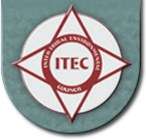Inter-Tribal Environmental Council
"...to protect the health of Native Americans, their natural resources, and their environment"


ITEC History
The mission of the Inter-Tribal Environmental Council (ITEC) is to protect the health of Native Americans, their natural resources and their environment as it relates to air, land and water. To accomplish this mission, ITEC provides technical support, training and environmental services in a variety of environmental disciplines. ITEC has member Tribes in Oklahoma, New Mexico and Texas.
The office has a technical professional staff who are committed to providing technical support, training and environmental services to the individual member Tribes. In addition, the staff is committed to assisting each individual Tribe with other environmentally-related issues and concerns as they may arise.
2024 – The ITEC programs include ATTAINS, Food Sustainability, the General Assistance Program (GAP), Clean Air Program, Underground Storage Tank Program, Pesticides Program, Brownfields and Superfund Program. There are a total of 46 ITEC member Tribes in Oklahoma, New Mexico, Texas and Louisiana.
2017 - The ITEC programs include General Assistance, Clean Air Program, Underground Storage Program, Pesticides Program, Brownfields Program and Superfund Program. There are a total of 45 ITEC member Tribes in Oklahoma, New Mexico, Texas and Louisiana.
2011 - The ITEC programs include the General Assistance Program, the ITEC Training Grant, Clean Air Program, Clean Water Program, Pesticides Program, Underground Storage Tank/Leaking Underground Storage Tank Program, Superfund Program, Brownfields Program, and Information Exchange Network Program.
2006 - The ITEC programs include the Indian Environmental General Assistance Program, the ITEC Training Grant, Clean Air Program, Underground Storage Tank/Leaking Underground Storage Tank Program, Superfund Program, National Environmental Information Exchange Network (NEIEN) Challenge Project, RCRA Subtitle D Solid Waste Programs and ITEC Brownfields Response Program (IBRP).
2005 - The OES became Cherokee Nation's Environmental Programs (CNEP). The ITEC programs include the Indian Environmental General Assistance Program, the ITEC Training Grant, Clean Air Program, Underground Storage Tank/Leaking Underground Storage Tank Program, Superfund Program, National Environmental Information Exchange Network (NEIEN) Challenge Project, RCRA Subtitle D Solid Waste Programs and ITEC Brownfields Response Program (IBRP). In addition, ITEC is providing management assistance for four Superfund sites which impact tribal land: Tar Creek in northeastern Oklahoma; Hudson Refinery near Cushing; Tulsa Fuels and Manufacturing near Collinsville; and Oklahoma Refinery Company in southwestern Oklahoma.
2004 - The ITEC programs including the Indian General Assistance Program, a Clean Air Program, a RCRA Subtitle C Hazardous Waste Program, a RCRA Subtitle D Solid Waste Program, a RCRA Underground Storage Tank/Leaking Underground Storage Tank Program, a ITEC Brownfields Response Program funded by EPA, the ITEC Training Grant, and the Superfund Program. Technical assistance has also been provided to non-ITEC member tribes within Region 6 and across the country.
2003 - The ITEC programs include the Indian General Assistance Program (GAP), a Clean Air Program, a RCRA Subtitle C Hazardous Waste Program, a RCRA Subtitle D Solid Waste Program, a RCRA Underground Storage Tank/Leaking Underground Storage Tank Program funded by EPA, the ITEC Training Grant and the Superfund Program.
2002 - The ITEC Training Grant was added to the ITEC programs. This grant provides technical training to Tribes throughout EPA Region 6.
2001 - The ITEC programs again included Superfund, GAP, UST, Clean Air, Solid Waste and a Hazardous Waste Program was added for ITEC. A Clean Water 106 grant, Chemical Emergency Preparedness & Prevention grant and Brownfields Pilot Project were added and they will be managed by the OES for the Cherokee Nation.
2000 - The five basic programs were still in place but, one other project grant was added. That grant was a U.S.G.S. MetaData training grant.
1999 - The Oil/Gas Program was phased out by the EPA. As in the previous year, the ITEC programs were limited to Superfund, GAP, UST, Clean Air and Solid Waste.
1998 - The Oil/Gas Program was added. The Oil/Gas Program was designed to provide Tribal oil/gas databases, oil spill notification and training. The ITEC programs included Superfund, GAP, UST, Clean Air, Solid Waste and Oil/Gas.
1997 - Both a Clean Air and a Solid Waste Program were added. Clean Air was designed to digitize Tribal landbases, conduct source/emission inventories and conduct ambient air monitoring. Solid Waste was designed to develop solid waste codes, training and educational outreach. The programs were now Superfund, GAP, UST, Clean Air and Solid Waste.
1996 - The Underground Storage Tank (UST) Program was added. The UST Program was designed to help the ITEC member Tribes comply with existing federal regulations by upgrading and managing their UST's. The ITEC programs included Superfund, GAP and UST.
1995 - The Multi-Media Program became the Indian Environmental General Assistance Program (GAP) with essentially the same goals. The programs still only included Superfund and GAP.
1994 - ITEC was expanded to include a Multi-Media Program. Under the Multi-Media Program, the OES assisted the ITEC member Tribes in developing their capacity to manage environmental programs. The programs included Superfund and Multi-Media.
1993 - The scope of the Superfund Program was expanded to include 31 member Tribes in Oklahoma. A Memorandum Of Understanding (MOU) was signed by the EPA Region VI Office and the member Tribes. Thus, ITEC was formed. Under this MOU, the Cherokee Nation serves as an "agent" for developing, receiving and administering grants for ITEC. The Hazardous Waste Management Office's name was changed to the Office of Environmental Services (OES). Superfund was the only program.
1991 - The Cherokee Nation established the Cherokee Hazardous Waste Management Office and a Superfund Program with funding from the EPA Region VI Office. The Superfund Program was exclusive to the Cherokee Nation through 1992.